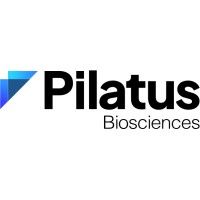Request Demo
Last update 08 May 2025
IL-10R x PDL1
Last update 08 May 2025
Related
1
Drugs associated with IL-10R x PDL1Target |
Mechanism IL-10R stimulants [+1] |
Active Org. |
Originator Org. |
Active Indication |
Inactive Indication- |
Drug Highest PhasePreclinical |
First Approval Ctry. / Loc.- |
First Approval Date20 Jan 1800 |
100 Clinical Results associated with IL-10R x PDL1
Login to view more data
100 Translational Medicine associated with IL-10R x PDL1
Login to view more data
0 Patents (Medical) associated with IL-10R x PDL1
Login to view more data
10
Literatures (Medical) associated with IL-10R x PDL101 May 2023·Translational Oncology
Retinoic acid-loaded PLGA nanocarriers targeting cell cholesterol potentialize the antitumour effect of PD-L1 antibody by preventing epithelial-mesenchymal transition mediated by M2-TAM in colorectal cancer
Article
Author: Jorquera-Cordero, Carla ; Chan, Alan B ; Schomann, Timo ; Lira, George A ; Cavalcante, Rômulo S ; Gomes, Raelle Ferreira ; Vilar, Natalia Feitosa ; Cruz, Luis J ; Vepris, Olena ; Júnior, Raimundo Fernandes de Araújo ; Chung, Chih Kit ; de Paula, Regina Célia Monteiro
01 Jun 2022·Stem Cells and Development
Th2 Cytokines IL-4, IL-13, and IL-10 Promote Differentiation of Pro-Lymphatic Progenitors Derived from Bone Marrow Myeloid Precursors
Article
Author: Bhattarai, Nihit ; Ran, Sophia ; Wilber, Andrew ; Espinosa Gonzalez, Maria ; Volk-Draper, Lisa
01 Jun 2018·European Journal of ImmunologyQ3 · MEDICINE
Arginase‐1 is neither constitutively expressed in nor required for myeloid‐derived suppressor cell‐mediated inhibition of T‐cell proliferation
Q3 · MEDICINE
Article
Author: Liang, Hongwei ; Liu, Yuan ; Shi, Lei ; Abdelaal, Ahmed Mansour ; Bian, Zhen ; Zen, Ke ; Culpepper, Courtney ; Xiong, Lanqiao ; Kidder, Koby ; Venkataramani, Mahathi
Analysis
Perform a panoramic analysis of this field.
login
or

AI Agents Built for Biopharma Breakthroughs
Accelerate discovery. Empower decisions. Transform outcomes.
Get started for free today!
Accelerate Strategic R&D decision making with Synapse, PatSnap’s AI-powered Connected Innovation Intelligence Platform Built for Life Sciences Professionals.
Start your data trial now!
Synapse data is also accessible to external entities via APIs or data packages. Empower better decisions with the latest in pharmaceutical intelligence.
Bio
Bio Sequences Search & Analysis
Sign up for free
Chemical
Chemical Structures Search & Analysis
Sign up for free
